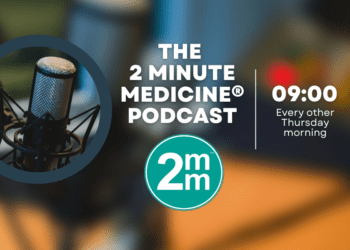Multiple pharmacotherapy adaptations for smoking cessation based on treatment response in Black adults who smoke
1. For Black adults treated for smoking cessation, there were no differences in 7-day abstinence rates at 12, 18, and 26 weeks follow-up, when randomized to a single pharmacotherapy nicotine patch (NP) regimen, compared to a regimen with early opportunities for pharmacotherapy adaptations.
Evidence Rating Level: 1 (Excellent)
Current guidelines for smoking cessation recommend 8-12 weeks of the same pharmacotherapy even if a patient continues to smoke. However, over 2/3 of people who do not achieve abstinence in 4 weeks of pharmacotherapy do not achieve it at subsequent times. Some studies have shown that changing pharmacotherapy early in response to a failed quit attempt, regardless of what medication was switched to, can improve abstinence rates. However, the participants in these studies are predominantly white, and there are differences in smoking patterns in the Black population, including smoking fewer cigarettes daily and smoking more menthol cigarettes. Therefore, this unblinded randomized controlled trial aimed to examine the rates of abstinence, among non-Hispanic Black adults continuing with a single pharmacotherapy, or usual care (UC), versus multiple pharmacotherapy adaptation, or adapted therapy (ADT). Participants were included if they smoke between 5 and 30 cigarettes daily for 25 of the last 30 days, had an exhaled carbon monoxide (CO) of 5 ppm or more, and had a desire to quit, with no pharmacotherapy used for a quit attempt in the last 30 days. There were 196 patients randomized to UC and ADT each. The UC patients received a 24-hour 21 mg nicotine patch (NP) for 18 weeks. ADT patients received the NP for 2 weeks initially, with up to 2 pharmacotherapy adaptations, including a first switch to varenicline and second switch to bupropion+NP. Adaptations were done if CO ≥6 ppm at weeks 2 and 6 respectively. Counselling was provided to both groups. The main outcome analyzed was antabine- and anabasine-verified 7-day abstinence at 12 weeks, 18 weeks (conclusion of treatment), and 26 weeks. Overall, there were no significant differences in 7-day abstinence at any of the endpoints between UC and ADT groups. At week 12, 17.4% and 11.7% of ADT and UC patients quit respectively (odds ratio 1.58, 95% CI 0.89-2.80, p = 0.12). At week 18, 16.3% and 15.8% of ADT and UC patients quit respectively (OR 1.04, 95% CI 0.61-1.78, p = 0.89). And at week 26, 12.2% and 13.3% of patients quit respectively (OR 0.91, 95% CI 0.50-1.65, p = 0.76). In conclusion, there was no difference in abstinence rates for Black patients randomized to single pharmacotherapy for smoking cessation versus a treatment plan with 2 pharmacotherapy adaptations when needed.
Image: PD
©2023 2 Minute Medicine, Inc. All rights reserved. No works may be reproduced without expressed written consent from 2 Minute Medicine, Inc. Inquire about licensing here. No article should be construed as medical advice and is not intended as such by the authors or by 2 Minute Medicine, Inc.






